In this article we explore DAM software. What it is, how it works, who uses it, and the benefits and features. DAMs can transform the way you manage content in your business, reduce administration time and cost, and increase the ROI on the content you produce. Consider your current content management processes. Contact us to discuss how we can help transform your business.

DAM software can help you manage and leverage the digital content you create in powerful new ways.
What is digital
asset management (DAM)?
Digital
asset management, also known as DAM, is a strategy, and supporting system and
process for the management of content that exists and needs to be managed in a
digital format. The basics of managing this digital content include ways to
store, search, share and transform it. Content owners can then better utilise
and leverage the content they have invested in creating.
What is digital
asset management (DAM) software and why do I need it?
Digital
asset management (DAM) software supports digital content strategies. It
overcomes several common business problems:
- Time
wasted finding and sharing content stored across your network or share drives.
- Sometimes
content is forgotten or lost due to its lack of visibility, wasting money that
was invested creating it.
- Security
concerns in an age where cyber-security is more important than ever.
- Inconsistent
branding or brand damage due to old content being shared with clients.
- Sharing
of content with disconnected teams, spread geographically, in a timely manner.
DAM software
provides an online library where digital content can be securely uploaded,
filed, organised, and stored ready for retrieval and use. Once stored the DAM
software supports users with search and filtering tools that allow them to
quickly find their content again as needed. A good DAM system will have advanced
tools that support the on-going maintenance of the stored content, including editing,
transforming, or resizing of the content, automated application of search tags
to content, archiving tools, bulk editing of metadata. Content can then be
shared with the necessary stakeholders, both inside and outside a business.
This is achieved by either granting permission-based access to the library, or
by sending the content to recipients easily by email or download sharing links.
Advanced DAMs will have reporting functions that deliver insights into the performance
of your content and users.
What
information can you store in digital asset management (DAM) software?
You should
be able to store all common file types, including documents, images, graphics,
videos, audio, and HTML. If the content is used in the daily running of your
business, sales, and marketing, both online and offline, then a DAM should be
able to store it.
What are
the features of digital asset management (DAM) software
As a
web-based solution facilitating a process, you can expect a DAM software
solution to have the following features:
- A
secure, online library, available 24/7, anywhere internet access is possible.
- The
ability to tag, file and organise the content you upload with directories,
filters, and tags.
- Powerful
search tools that allow you to quickly find the content in your library.
- Maintenance
features that help you quickly edit and manage the content in your library.
- Role
or permission-based user profiles that allow you to control the access and
functionality of the users that you allow to enter your library.
- The
ability to quickly share content with stakeholders, or allow them to
self-serve, regardless of where they are geographically located.
- Reporting
tools that allow you to monitor the use of your library and digital content.
What are
the benefits of digital asset management (DAM) software?
Introducing
DAM software to your business resolves many common team frustrations:
- Trying
to locate content across your network, by providing a centralised library and
powerful search tools.
- Increased
use of content, by making it more available to teams across your business.
- Reduced
time performing admin tasks, by automating tasks, or allowing users to
self-serve and access content themselves.
- Reduced
branding issues, by ensuring business teams only have access to the most
current and correct content.
- Improved
ROI for content, by creating visibility through reporting of content use and
system adoption.
- Improved
security and control of content, by providing a secure library that can only be
accessed with permission-based roles.
Who uses
digital asset management (DAM) software?
Administration teams, legal teams, and document owners have official forms, reports, event
photography, and documents they are responsible for managing, storing, and
sharing across their business or clients.
Marketing and brand teams produce marketing material and content. This can include completed
design work, brand guidelines and elements, imagery, video, and radio
advertisements. This content needs to be stored for team reference and
efficiency, or shared with agency partners, branches, sales teams, or other
departments, these could be local or international.
Agencies, photographers, and videographers produce physical and digital design work for
clients. These teams need to store work for future reference and be able to
share it with clients, who could be based locally or internationally.
We're standing by to revolutionise the way your team works. Contact us for a demonstration or to get started today.
Request Demo